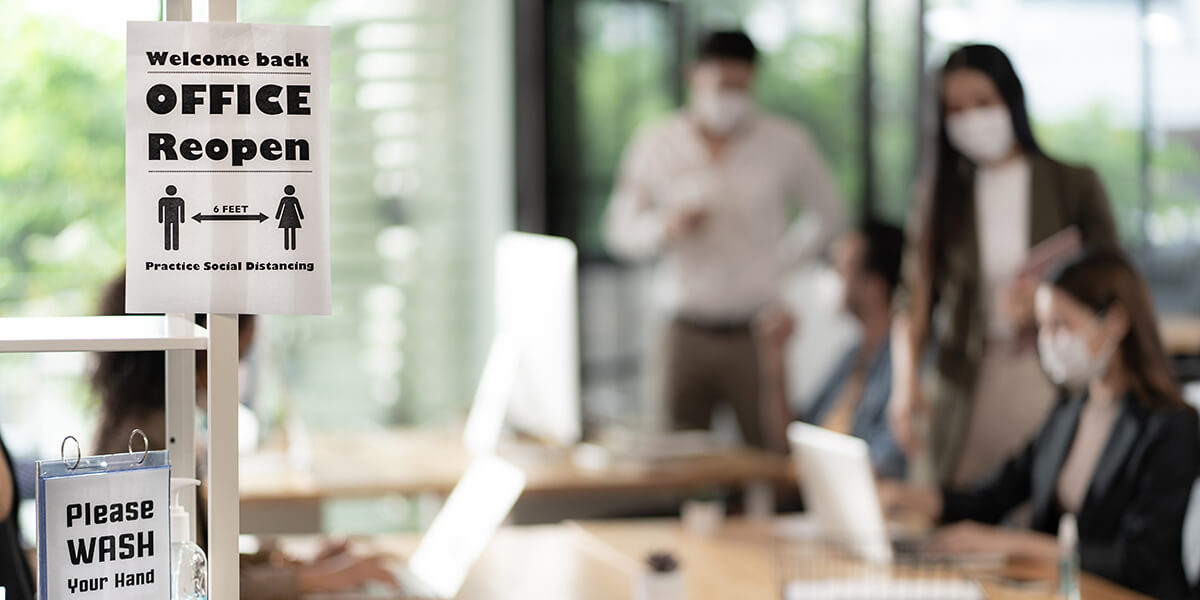This past year, nearly every employer (including yours) focused more attention than usual on communicating with their employees – about how to get them to adjust to different schedules or locations, encouraging (or requiring) them to show up during the worst of the pandemic and, of course, how to keep them safe.
Employee communications played a key role in each of these challenges, but the need for heightened or more comprehensive employee communications isn’t going away in 2021.
Why? What’s going on? And what should you do about it? It’s important for every organization to consider that while the employee communications challenges they will face in 2021 may look different, the responses need to follow tried and true best practices.
First, acknowledge the situation.
Employees are tired – whether from back-to-back Zoom/Team video calls or, in an even more burdensome situation, wearing masks and other PPE all day. Have you acknowledged that? Early in the pandemic, the public and media recognized and thanked healthcare and other essential workers.
- If you employ the same types of employees, and recognized them then, what have you done since?
- And, if your workforce only had to switch where they sat while they stared at their laptops, did you still recognize them?
It’s not too late. Celebrate those who had to balance caregiving, homeschooling and the like with work during a turbulent economic period. Highlight their accomplishments. With their permission, talk about how their family members adjusted, too. If you were one of those organizations who did celebrate your employees during the pandemic, don’t stop now. Find creative ways to keep that fresh.
Keep in mind that stress levels among your employees have been high for a long time. Even if your organization has done everything right, what’s happening in our country, from the pandemic to economic dislocation to political unrest all create a tremendous amount of stress that has psychological and physical effects. If you’re in healthcare or manufacturing, that stress can lead to mistakes or accidents. Plan your employee communications strategy accordingly.
Seek out employee perspectives.
By show of hands, did your organization survey you and your fellow employees in 2020? Anyone? If they did, good for you. If they didn’t, this should be one of your top priorities in 2021.
- What are your employees looking for from your organization in 2021?
- What flexibility do they now want and need?
- What resources and support do they need to do their jobs better?
- How can you help them manage stress?
- What improvements could they identify in terms of ways to be more efficient, save money and the like?
- What new, or historic, company traditions and culture should be kept and/or reinstituted when returning to the office?
A well-designed survey will give you insights around these and other issues that will impact employee motivation and satisfaction over the course of the year.
Consider employee concerns.
Many employees are scared to come back to the office. Should they have to? Some employees will be reluctant to get the vaccine. How will you handle all of that? How will you handle local/regional differences that remain in regulations and guidance? Whatever you decide, developing and deploying an effective employee communications strategy will be key. Recent events in Washington, DC are likely to make employees even more anxious, so carefully consider how your communications can help provide reassurance.
Support retention and recruiting with clear communication of company’s values.

It might be hard to contemplate at the moment, but it’s inevitable that your best and brightest employees will be sought after by recruiters and employers when the economy comes back. Some industries, like healthcare, faced a recruiting crunch before the pandemic hit. Those challenges have only gotten more extreme. People who were thinking of hiring or leaving a year ago had to shut down those plans when the pandemic hit. What will you do to show your employees or prospective employees they have great opportunities at your organization and that is where they belong? A strong employer branding program and clearly-designed and -communicated employee development plan can help.
Focus early, and proactively, on diversity and inclusion.

Diversity and Inclusion got a lot of attention in mid-2020. Certainly, there are things an individual concerned about the Black experience can do, as I wrote about here. At the same time, the need for stronger organizational diversity and inclusion has not gone away and, in fact, should be one of the top issues for 2021. It would be a mistake to wait until one of your current or former employees believes he/she has been discriminated against and takes their concerns to the media, social media or the EEOC. This issue shouldn’t be thought of in purely defensive terms, either. A diverse workforce is absolutely essential to help organizations optimize their financial and operating performance. What are you doing to recruit, retain and develop a diverse workforce and management team? Effective employee communications plays a key role here too.
Expect the unexpected and plan for how you will communicate the impacts.
Politics aside, it’s well known that the Trump Administration eased workplace regulations such as expanded overtime eligibility and others, while making it harder for unions to organize workplaces. What do you think the Biden Administration will do? They certainly won’t keep those in place. Now that the Democrats control both the White House and both houses of Congress, there’s a lot that can happen legislatively. Keep a particularly-close eye on the PROAct, a union-sponsored piece of legislation that is a top labor priority. If it passes in its current form, it would be the most significant set of changes to happen to US labor law in at least 50 years. How can you prepare your organization for what’s coming? What can you do now? Tighten up your policies and procedures, take a careful look at your employee handbook, increase supervisor training – and communicate all of these things and more.
Stepped-up employee communications helped American organizations adapt to the worst pandemic in 100 years. Even as the pandemic (hopefully!) recedes in 2021, the need for effective employee communications is more critical than ever.
What are you doing to communicate more effectively with your employees?


